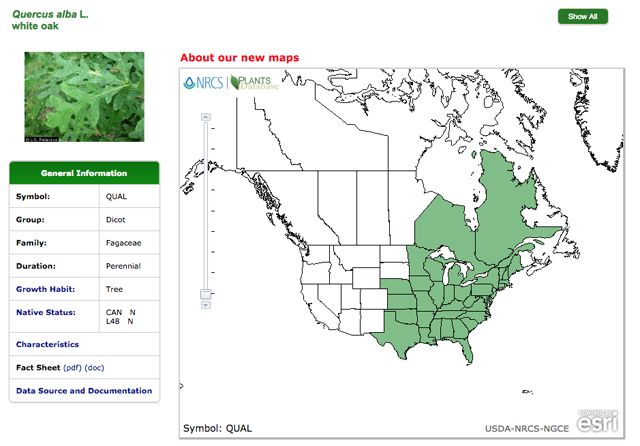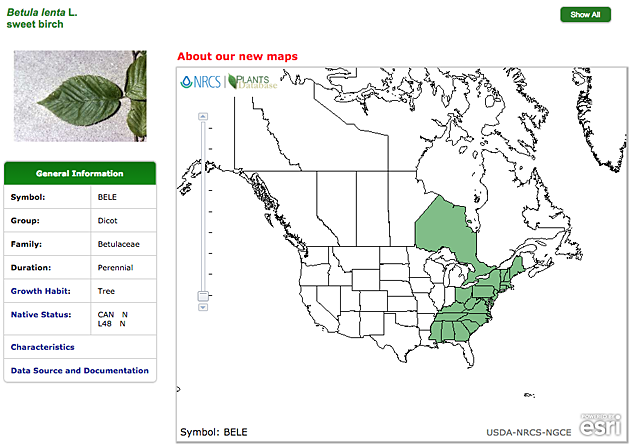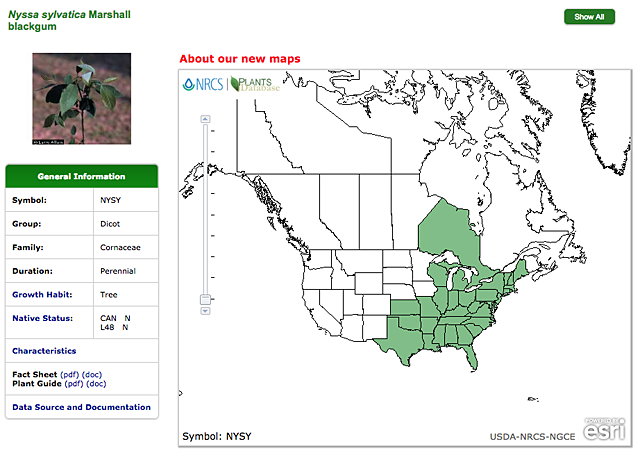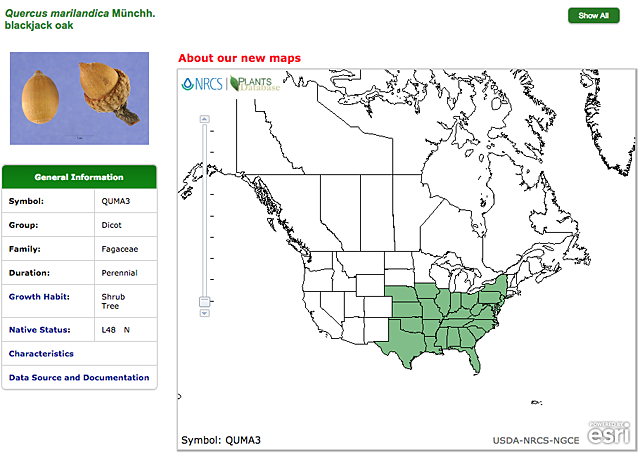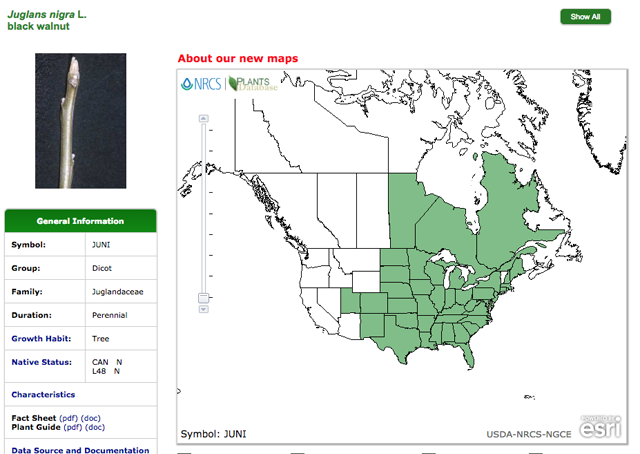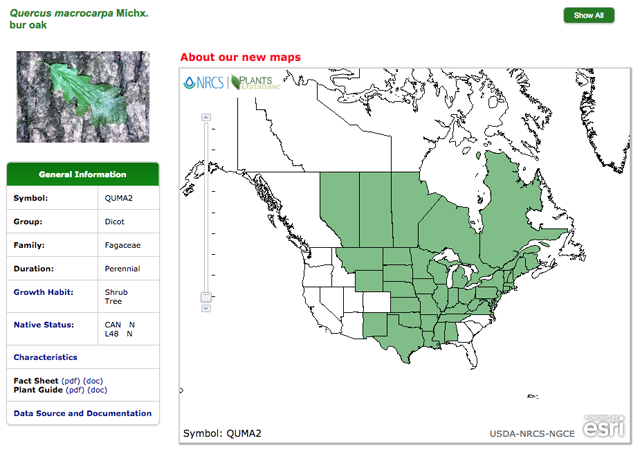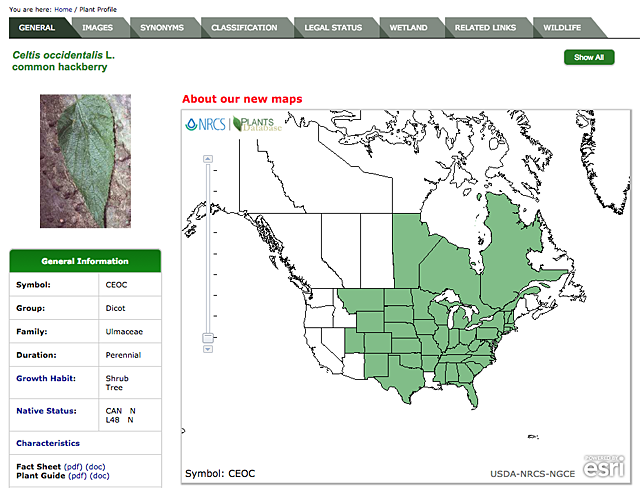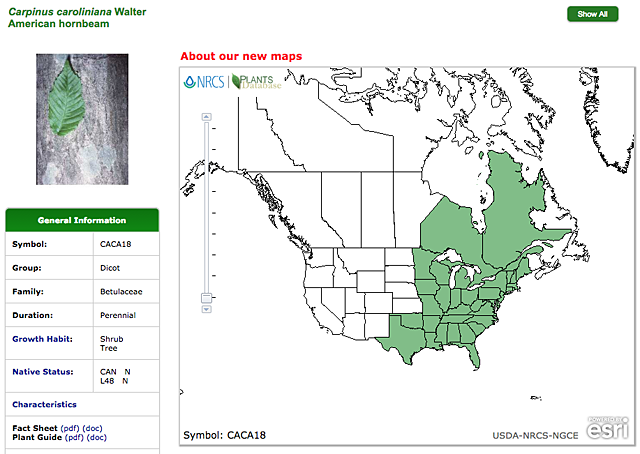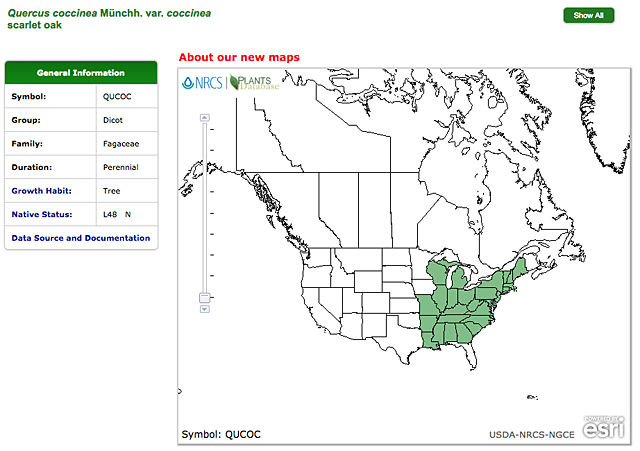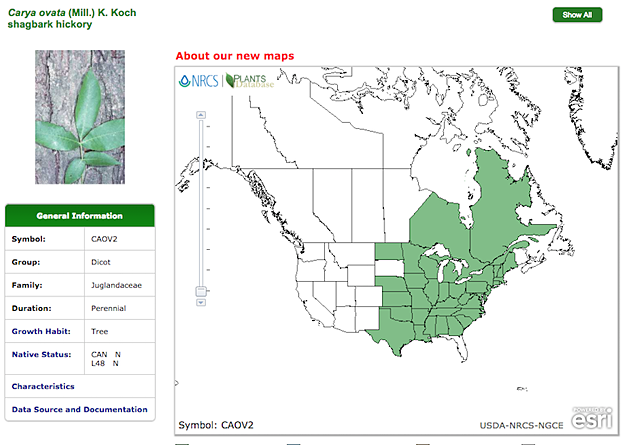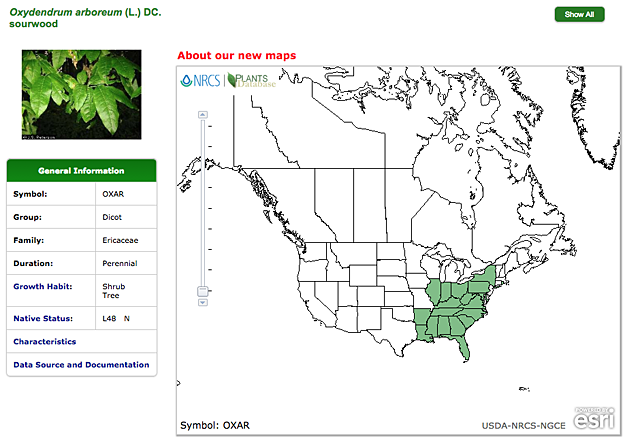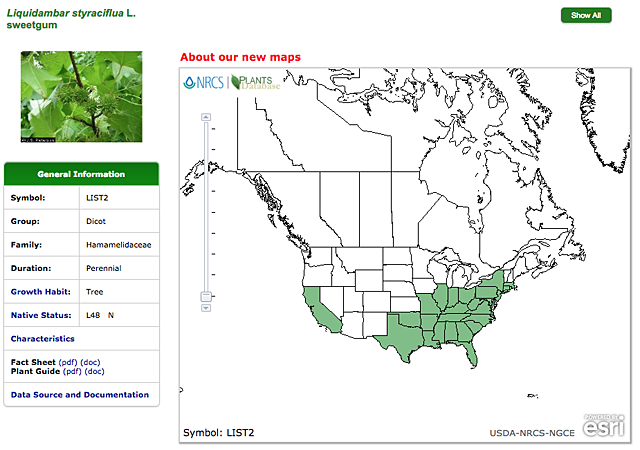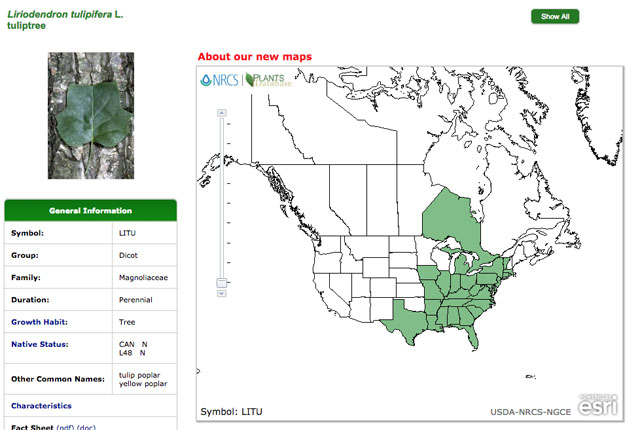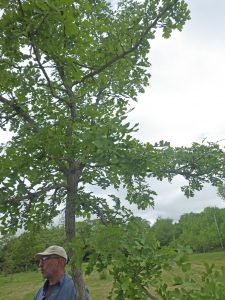
Bur Oak grown horticulturally at Grand Oaks on Grand Lake, Halifax Co., Nova Scotia does just fine. It occurs naturally in N.B. and elsewhere on the eastern seaboard, why not in N.S? There are a dozen species of oak in Massachussetts. Should we be introducing bur oak and other species to the south and west of us to NS to speed up adaptation to climate warming and make our forests more resilient to pests?
Could we add a dozen or so species to our hardwoods to better adapt to climate warming and increase resilience to pests?
A recent post on the Federation of Nova Scotia Woodland Owners Facebook page on how we might reduce impacts of exotic pests, led to some interesting followup discussion on the Healthy Forest Coalition Facebook page about reducing clearcuts and on Assisted Range Expansion*:
*“the human-assisted movement of species to areas just outside their established range, facilitating or mimicking natural range expansion [associated with climate warming].(Source: NRC: Assisted migration)
1. Federation of Nova Scotia Woodland Owners Sep. 21, 2018, citing Federal agency confirms presence of tree-destroying beetle in Nova Scotia (Canadian Press, Sep 21, 2018):
“It would be interesting to see the results of putting nutrients back into our forested land and also increasing pH… it works to add resilience to vegetable crops to prevent pest infestation; when a plant has what it needs nutritionally, it remains pest resistant. Let’s do our part in our woodlands… together we can! #ForestsProvide”
Following are responses posted on the The Healthy Forest Coalition Facebook page
Updated Sep 30 a.m.
2. ML shared post #1 above and commented: Emerald ash borer and hemlock wolly adelgid now have a confirmed presence in Nova Scotia in just over a year. Our forests need all of the help and proper stewardship they can get to ensure they remain healthy. Thousands of acres of clearcuts not included….
3. NH: Definitely, our disturbance footprint provides the conditions that abet the “invasive” species. I like very much all the trees in NS but we will lose the character…if we think we can garden thru sanitary means (tree removals) or herbicide or exotic bioontrols our way out of it. We need to reduce clearcutting which is letting glossy buckthorn* flourish, and maintain good forest process (shade age gaps dead wood, area, fire in cases). Now we’ve done that, go to southern Maine and get seed of species that are ready for our climate and are not able to get here…
*View More about glossy buckthorn
4. DC: New seed would be nice. I’ll put in an order for some black birch, please.
Meanwhile, we can’t fertilize the entire southwest. There will be those who want to turn forests into still more agro-forestry, with the ‘gardening approach’, as if we haven’t done enough damage already.
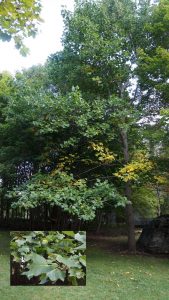
Tulip poplar in Halifax, Sep 30, 2018. It was established from a nursery tree, approx 1 inch dbh in 1995; current dbh: ~13″
5. NH: In defence against exotics in time of climate change , I want to test plots of
– sourwood
– shagbark
– American white oak*
– blue beech
– black walnut
– hackberry
– scarlet oak
– blackjack
– bur oak
– black gum
– sweetgum…by gum we might even try tulip poplar in Caledonia.
Magnolia will have to wait a while longer.
____________________
*From NatureNS posts, Sep 22, 2018
DS: “I’ve been seeing some oaks around Windsor lately that have rounded margins, different than our red oaks. Some small shrubby on roadsides but recently a mature tree with lots of acorns (collected 20 or so). Pretty sure these are Quercus alba, Eastern White Oak so named in my Sibley’s guide to trees. This species is absent in my ns tree guide. Can anyone comment on this tree and whether it is naturalized in these parts?”
JNResponse: “I understand that white oaks are not native here, but my brother got a couple as a wedding present back in ’87 and planted them. One blew down; think the other is still standing, down here on Wyman Road in the banana belt.”
Nova Scotia Plants cites two oaks as occurring in the wild in NS: red oak (Quercus rubra),native, English oak (Quercus robur ) from Europe. It also notes that “Quercus bicolor Willd., the Swamp-white Oak was found recently as an escape from cultivation near Wolfville.
6. ML: Bur oak seems to do fine here. Maybe some black walnut and American hickory (or is that also called shagbark?) too!
7. NH responds to ML: Shagbark hickory gets into Maine and so does bitternut hickory. Mockernut and pignut hickories are nearly there. Apparently “american hickory” can refer to several hickories including all those and shellbark hickory. See Notes On Axe Handles: “The handle shall be Shagbark Hickory (Carya Ovata), Shellbark Hickory (Carya Laciniosa), Mockernut Hickory (Carya Tomentosa) or Pignut Hickory (Carya Glabra) of clear all white wood…”
8. BW: I planted a couple of Shagbark Hickory a few years ago and they are doing well. They did get hit by that hard frost this spring — leaves fried and looked bad, but the trees grew new leaves and they look good. Other trees I have started at my place are Sycamore, Redbud, Bitternut Hickory, Blue Beech, Hackberry and Pawpaw. They are all looking fine so far and made it through that late June frost. I figure it is worth seeing how well they do… I might try some others as well — I only have a couple of acres, so don’t have room for a lot of experimentation… I would rather see these species that I’m used to from Ontario, than to see trees from other parts of the world. When I spent last year in Ottawa, I was quite dismayed to see that they are using Gingko trees as one of the main trees being planted along boulevards. I also discovered a huge number of Tartarian Maple growing in an abandoned industrial park –large trees, and now many small seedlings and whips — and those are definitely spreading out across vacant lots in the surrounding areas.
9. DP: Wow, neat. Pawpaw – is that a cold hardy variety? They are planting Ginko in Halifax also, but I believe they are all male trees (because the seeds are “malodorous”), so likely they will not spread, but I agree, at they should least use trees from the region. Re Tartarian maple etc. I don’t understand why forestry people tend to be really up tight about range extension introductions but they ignore rampant horticultural introductions of things that go invasive like that.
10. BW: The Pawpaw was collected by a seed person in southern Ontario, so it should be hardy to at least the climate in that region. I planted them during the late winter and have about a dozen that pulled through out of 24 seeds to start. Unfortunately, a skunk knocked over the pots and dug around through them, so I lost a few plants, but the rest are doing okay so far. I am told that there is a Pawpaw that has fruited at the Annapolis Royal gardens, so I have hope that these might some day. Worth a try. Ottawa is planting a lot of Ginkgo – I posted on the Ottawa Trees group to ask about it and one of the people from the city forestry said they are using them because they are heat and pollution tolerant. I had noticed them all over the place — along boulevards and in shopping mall parking lots — so I wondered what that was about and posted that question. I was told they are trying 2 or 3 other non-native trees for similar reasons as they are losing the ash, maple, butternut, etc.. Makes me rather sad that they aren’t trying more North American species, but perhaps they have and they don’t do well in cities. Anyhow, that’s what I’m trying here — planting seed of species that I suspect might do well in this region. I have not planted any Oak yet, but that might be my next experiment if I can get some acorns. I have not planted Butternut as I saw how it was devastated by canker back in Ontario, so it seems sort of pointless.
11. SH: Bridgewater Community Garden planted several Pawpaw trees – they have not fruited yet but I think they are around three years old.Bridgewater Community Garden planted several Pawpaw trees – they have not fruited yet but I think they are around three years old.
12. BW to SH: That’s interesting! I hope they will eventually fruit. I can’t remember for sure, but I think it’s about 7 years until they are supposed to fruit. That said, I think the one in the Annapolis Royal gardens took quite a bit longer if I remember correctly.
13. BW: Just an additional note on trees. I see Sweetgum mentioned above (Liquidambar styracflua). Although quite a beautiful tree in autumn, they have about the peskiest fruit of any tree I’ve ever encountered. I don’t know that you can really call it a nut — it’s sort of a corky thing with spikes all over it — very sticky. On one of my many trips back and forth across the midwest states, I camped at a park that had planted Sweetgum rather extensively. Just happened I was there when there were thousands of what are nicknamed “gumballs” or “stickerballs” all over the ground. They stuck all over both my collie dogs – really stuck in their fur in a terrible way — and got into my van on the bedding and on my clothes. I would not be particularly thrilled to have those growing on my property.
14. DP: Re: tulip poplars…Quite a few tulip poplars (Magnoliaceae) in Halifax, and horticultural magnolias..not sure proportion of NS versus Asian origin – Magnolias exhibit disjunct SE Asia/E NA&Brazil distribution (broadly) – but I would say this part of NS is ready for them.
———-
Thx to the Federation of Nova Scotia Woodland Owners, the Healthy Forest Coalition and those cited for this constructive discussion.
It would be nice to think that our Department of Lands & Forestry is actively pursuing these topics (and thinking about moving away from clearcuts and encouraging boreal softwoods while they are at it*).
*See Silvicultural Discipline to Maintain Acadian Forest Resilience by Peter Solnius (2007).
Below are some distribution maps for the species cited above, from the USDA Natural Resources Conservation Service Plants Database. Click on an image to go to the related USDA page and more information about the species.
The maps indicate presence or absence in a province or state, not the distribution within the province or state.
Note that eight of the twelves species are already present in Canada.

